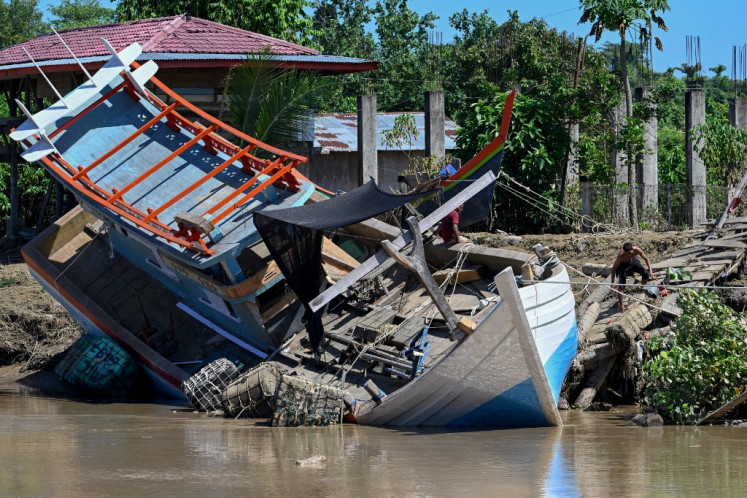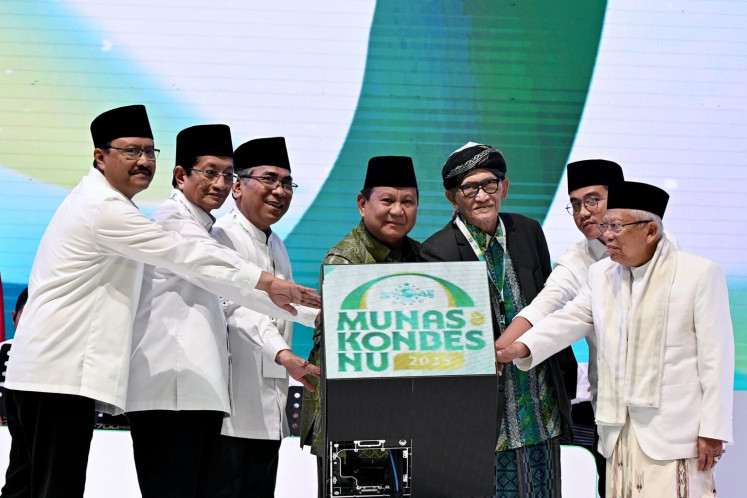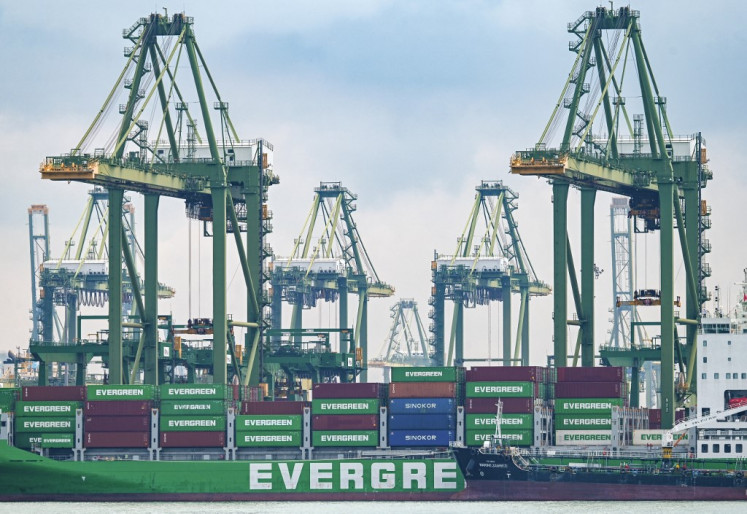Popular Reads
Top Results
Can't find what you're looking for?
View all search resultsPopular Reads
Top Results
Can't find what you're looking for?
View all search resultsASEAN Charter: One year and going strong
The Association of Southeast Asian Nations (ASEAN) leaders signed the ASEAN in November 2007 in Singapore and came into effect on Dec
Change text size
Gift Premium Articles
to Anyone
T
he Association of Southeast Asian Nations (ASEAN) leaders signed the ASEAN in November 2007 in Singapore and came into effect on Dec. 15, 2008 with high expectations that it will see the transformation of ASEAN from a loosely formed association to a rules-based and integrated Community by 2015.
ASEAN has indeed been on track in implementing its commitments under the ASEAN Charter and the Roadmap towards the ASEAN Community 2015 comprising the Blueprints of the ASEAN Political and Security Community, ASEAN Economic Community, ASEAN Socio-Cultural Community and the Second Work Plan of the Initiative for ASEAN Integration.
Since the coming into force of the Charter, ASEAN has implemented several provisions of the important document in terms of institutional arrangements. These include the convening of the ASEAN Summits twice a year with one meeting of the leaders focusing solely on ASEAN community building and the other dedicated to relations with ASEAN’s Dialogue Partners of China, Japan, South Korea, and India as well as ASEAN Plus Three Summit and East Asia Summit.
The ASEAN Committee of Permanent Representatives (CPR) has been established and is actively coordinating the core business of ASEAN, including the implementation of the Charter and the three Blueprints. The CPR works with the ASEAN Secretariat in undertaking these roles as well as supporting the Secretariat by ensuring adequate budget and resource allocation, effective human resource and administration procedures and practices, and efficient finance and budget systems are in place in the ASEAN Secretariat.
In line with ASEAN’s goal and objective of building an open, transparent and inclusive Community, the ASEAN Charter also provides for the accreditation of Ambassadors to ASEAN from friendly countries that desire to strengthen ties with the region. So far 26 countries and the European Union had accredited their Ambassadors to ASEAN who serve as interlocutors between ASEAN and their respective countries.
All ASEAN’s dialogue partners have accredited their Ambassadors and some are even planning to open their missions in Jakarta to work closely with the ASEAN Secretariat and the CPRs. The US is expected to open its mission in Jakarta by the middle of next year.
Another key development is the establishment of the ASEAN Inter-Governmental Commission on Human Rights last October which will support the promotion and protection of human rights in the region. The Commission has started work and is looking at drawing a five-year work plan for priority actions. The work of the Commission is expected to be dynamic and will commence with promotion and gradually cover protection aspects of human rights. The Commission will be a vehicle for progressive social development and justice, the full realization of human dignity and attainment of a higher quality of life for the peoples of ASEAN.
If what ASEAN has achieved in the last one year is considered as form rather than substance, we must understand that the rules-based ASEAN regime has just been established and therefore substantive outcomes will be achieved as the institutions and mechanisms created mature. However, this does not mean that ASEAN is not making any ripples after the Charter.
ASEAN is also playing a key role as a driver of and hub for the evolving regional architecture, which is becoming more dynamic with the growing importance of the Asia Pacific for global economic recovery and growth in the next decade. Through its dialogue partnership, ASEAN Plus Three process and East Asia Summit dialogue, ASEAN is ensuring the spirit of cooperation and unity in the development of a wider community of the future.
ASEAN is well aware that for it to stay as the fulcrum and drive the broader regional integration it must accelerate its own integration. ASEAN also recognizes that in building such a community, it must ensure inclusiveness and transparency so that its other partners too will benefit from ASEAN and East Asia integration.
ASEAN has been more successful on the economic front and this is obvious as economic integration had been a catalyst for ASEAN cooperation through the ASEAN Free Trade Area (AFTA) and now ASEAN integration through the building of the Single Market and Production Base by 2015 under the ASEAN Economic Community. By January 2010, tariffs under AFTA for the six older countries of ASEAN will be almost zero. The ASEAN Trade in Goods Agreement that was signed this year will further buttress AFTA by also supporting trade facilitation measures, in terms of harmonizing, simplifying and improving custom procedures, standards and conformity assessment, and phytosanitary measures.
There is concerted effort now to tackle non-tariff barriers to trade through the implementation of a comprehensive work program. Besides, ASEAN’s free trade agreements with China, South Korea, India and Australia and New Zealand will become operational next year, which is expected to further enhance trade, investment and economic relations and regional connectivity and integration with the Asia-Pacific.
The services sector continues to be liberalized. ASEAN is close to implementing the 7th package of services liberalization and is working on its 8th package to be concluded in 2010 under the ASEAN Framework Agreement on Services. ASEAN is also building an integrated investment area in the region through its ASEAN Comprehensive Investment Agreement signed this year. The agreement will promote, facilitate, liberalize and protect investments in the region and will not only be accorded to ASEAN investors but also ASEAN based foreign investors.
The Socio-Cultural Community is focusing its efforts on human development, social welfare and protection, social justice and rights, ensuring environmental sustainability, building the ASEAN identity and narrowing the development gap. In particular, the ASEAN Commission on the Promotion and Protection of Rights of the Women and Children will be established soon. ASEAN is also working on an instrument on the rights of migrant workers.
With so much happening for ASEAN in the last one year with the Charter and the priority actions planned for 2010, ASEAN has been and will be a busy and interesting place to watch. The bee hive of ASEAN is bustling with energy and dynamism.
The writer is the first professio-nally recruited deputy secretary-general of ASEAN for the ASEAN Economic Community. His views are personal.










